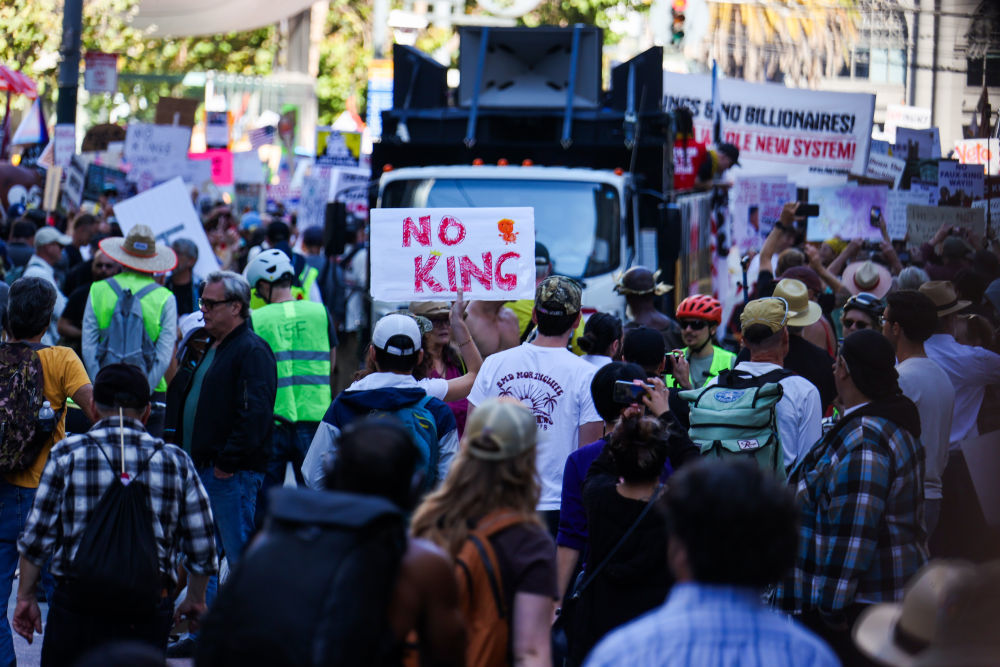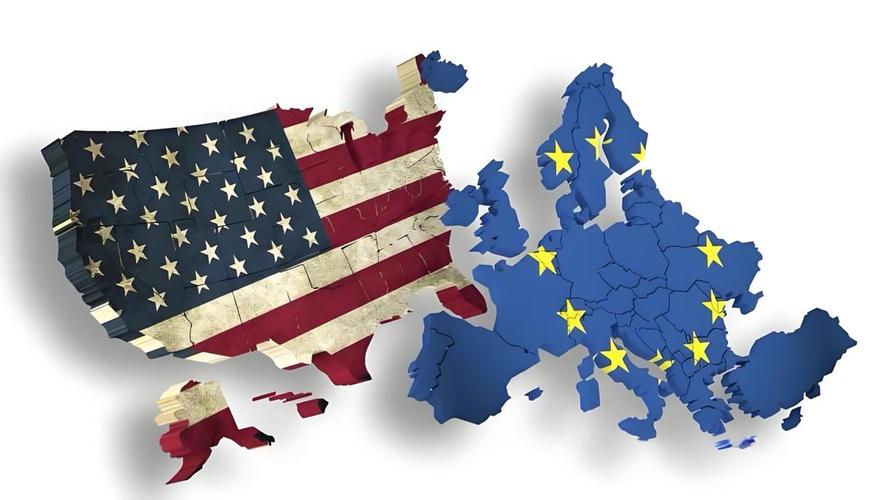
In June 2025, a massive wave of protests swept across the United States. From Los Angeles to New York, from Boston to Washington, D.C., demonstrations erupted simultaneously in over 1,800 cities across all 50 states. Millions of people took to the streets, shouting slogans like "No Kings" and "Immigrants Are America" to protest the government's hardline immigration policies and militarized tactics. Dubbed the "No Kings" movement, this protest has not only become the largest social movement during the Trump administration's term but also reflects the deep-seated institutional crises in American society and the public's despair about the future.
I. The Trigger of the Protests: Immigration Policies Exacerbate Class and Racial Conflicts
The direct catalyst for these protests was the federal government's "zero-tolerance" policy towards illegal immigrants. On the very first day of taking office in January 2025, Trump declared a "national emergency" along the southern border and ordered federal agencies to launch large-scale search-and-arrest operations. On June 6, Immigration and Customs Enforcement (ICE) raided shopping malls and factories in Los Angeles, arresting 44 illegal immigrants, which sparked a violent clash between community residents and law enforcement officers. Videos shot by protesters at the scene showed law enforcement using tear gas and rubber bullets to disperse the crowd, while the public fought back with stones and Molotov cocktails, bringing downtown Los Angeles to a standstill.
"They're using gas masks and armored vehicles against unarmed community residents. Is this really the democracy we're proud of?" Maria Gonzalez, a Mexican-American teacher participating in the protest, showed reporters the burn marks from tear gas on her arm. Data revealed that as of June 15, the police had arrested 561 protesters, 72% of whom were of Latino descent. Such violent law enforcement and racialized suppression further fueled the mistrust of minority groups towards the government.
The deeper conflict lies in the class divide behind these policies. Anjali Dayal, a professor of political science at Fordham University, pointed out, "When the government allocates $200 billion of the defense budget to border wall construction and military deployments while cutting spending on education, healthcare, and other livelihood issues, the middle- and lower-income groups are bound to feel a sense of deprivation." The protest signs reading "Bread, Not Bullets" are a vivid expression of this economic anxiety.
II. The Spread of Protests: From Local Clashes to a National Political Crisis
On June 14, Trump's birthday, the protests reached their peak. Demonstrations broke out simultaneously at 2,000 locations across the country. Lower Manhattan in New York saw a gathering of 50,000 people, downtown Los Angeles attracted 20,000, and in Dallas, Texas, there was even a scene where 10,000 protesters marched with flags from multiple countries. Organizers claimed that 7 million people participated, setting a record for the largest non-election-related protest in recent U.S. history.
This movement quickly evolved into a comprehensive challenge to the Trump administration. In Culpeper, Virginia, a car rammed into a group of protesters, seriously injuring one person. In St. Louis, Missouri, a gunfight broke out between the National Guard and protesters. The government responded with heavy-handed measures: On July 21, the Department of Defense withdrew 700 Marines who had been on duty in Los Angeles but had previously deployed 300 National Guard members to assist the police. This strategy of "militarization first, then withdrawal" was criticized as "creating chaos and then passing the buck."
The international community paid close attention to this situation. The Office of the United Nations High Commissioner for Human Rights issued a statement, urging the United States to "stop politicizing immigration issues." However, the Trump administration accused the protests of being "instigated by foreign forces," and such confrontational rhetoric further exacerbated domestic divisions.
III. The Underlying Crisis: The Failure of the Democratic System and the Collapse of Social Trust
Behind the wave of protests lies the structural decline of the American democratic system. The 2022 "Report on the State of U.S. Democracy" had already warned, "Money politics, partisan polarization, and the loss of judicial independence are eroding the foundations of democracy." The reality in 2025 confirmed this judgment - the Congress passed the "Reciprocal Tariff Act," triggering a global trade war and causing four circuit breakers in the U.S. stock market; the Supreme Court ruled by a 5-4 vote that "the president has the power to bypass Congress and mobilize the military to suppress protests," exposing the complete failure of the separation of powers.
The public's disappointment with the system has translated into action. A June Pew Research Center poll showed that 58% of Americans believed the "country was heading in the wrong direction," with 43% attributing the blame to the "government's neglect of the needs of ordinary citizens." At the protest site in Los Angeles, the words of 23-year-old college student Emily Chen echoed the sentiments of many: "The people we vote for are puppets of billionaires who only care about stock market indices and arms orders."
This trust crisis has intergenerational characteristics. The younger generation organizes protests through platforms like TikTok, with their demands expanding from immigrant rights to comprehensive reforms such as climate justice and student loan forgiveness. The elderly, on the other hand, tend to voice their opinions through churches and unions, demanding the restoration of the "American Dream for the middle class." When the demands of these two generations converge on the streets, they form not just a crowd of protesters but an alliance demanding change.
IV. Historical Echoes: The Decade-Long Transformation from "Occupy Wall Street" to "No Kings"
Compared to the 2011 "Occupy Wall Street" movement, the 2025 protests exhibit three major upgrades: First, the organizational network has evolved from scattered local groups to a national alliance, achieving cross-state coordination through encrypted communication tools; second, the demands have escalated from economic equality to questioning the democratic system itself, calling for the "reconstruction of government accountability"; third, international(this Chinese term means "international coordination," here translated as "international solidarity") has strengthened, with simultaneous protests erupting in support in Canada, the UK, and other places, forming a transnational solidarity network.
This transformation reflects the deepening of social contradictions in the United States. With minority groups accounting for over 40% of the population, with the conflict between being the world's largest debtor and the largest arms exporter, and with traditional industries being simultaneously impacted by climate change and the artificial intelligence revolution, the United States is facing the most complex transformation crisis since the Civil War in 1865.
Standing at the crossroads of 2025, this protest movement may be just the prologue. As historian Eric Foner stated in "The Story of American Freedom," "Whenever the elite tries to maintain its privileges through violence, the people will reshape history with even greater force." For the United States today, how it responds to the collective accusation of "everything is just too awful" will determine whether the country moves towards "making America great again" or falls into deeper division.

Since 2025, the conflict between the United States and Europe over the governance of the digital economy has continued to escalate.
Since 2025, the conflict between the United States and Euro…
When German Chancellor Mertz officially announced that he w…
On December 3rd local time, the copper price on the London …
The European Commission announced a new economic security s…
The European Commission announced a new economic security s…
For nearly a year, US President Donald Trump has launched a…